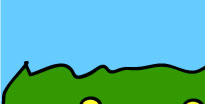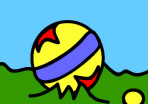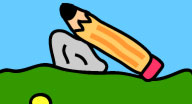|
We met with two extermely nice ladies today from the Anatomy department at
the university, and they kindly took the time to explain how a real human hand
works. Much to my dismay, we were greeted with rubber gloves and told to
"follow me". We were assured that all the cadavres are donated specifically
to the University of Toronto with the full consent of their now departed owners.
That, I'm sure, was meant to assuage whatever moral objection we may have had.
I ashamedly admit that moral objections were not, alone, the cause of my
trepidation.
Nonetheless, we were presented with three upper-limbs that were previously
attached to someone. Our kind instructors went on to explain how the human
hand functions, switching back and forth between the limbs that most adequately
demonstrated the layer of discussion.
I was surprised to learn that there is actually very little known about the
movement of the hands other than what is affected by the muscles. For example,
there are flat, ribbon-shaped tendons called aponeuroses that certainly affect
the constraints of motion of the hand, but of which little is known (at least
from the stand-point of motion-constraints.)
We learned much, of note though, is the fact that muscle bellies branch out
to several tendons, and tendons each have exactly one root on a finger bone.
This close connection between the finger bones to tendons sharing the same
muscle bellies seems to be an important factor in the dependence of finger
joint movements on one another. Also, there are flexor tendons and extensor
tendons that attach to the hand. The flexor tendons flex the hand at the
wrist, while the extensor tendons allow fingers to extend. This is a very
rough outline, but serves as a starting point for further research. (Research
that should no longer require hands-on demonstrations. (Please forgive pun)).
All in all, it is amazing how much one can absorb eventhough the vast
majority of the effort was expended on trying to keep lunch from making an
unwanted appearance. Were it not for the friendliness of our wonderful
instructors, said task would have been more challenging.
| 














